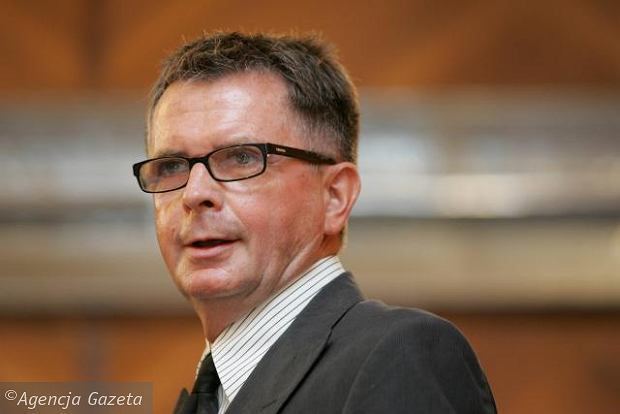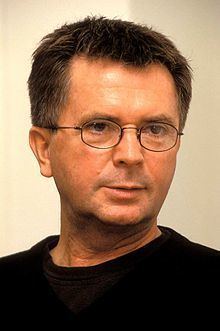Nationality Polish Fields Astronomer | Role Astronomer Name Aleksander Wolszczan | |
 | ||
Alma mater Nicolaus Copernicus University in Torun Education Nicolaus Copernicus University in Torun Discovered PSR B1257+12 B, PSR B1257+12 A, PSR B1257+12 C Similar People Dale Frail, Maciej Konacki, Bohdan Paczynski, Andrew Dickson White, Marian Rejewski | ||
Prof aleksander wolszczan astronomiczna przyszlosc ludzkosci
Aleksander Wolszczan [alɛkˈsandɛr ˈvɔlʂt͡ʂan] (born 29 April 1946 in Szczecinek, Poland) is a Polish astronomer. He is the co-discoverer of the first extrasolar planets and pulsar planets.
Contents
- Prof aleksander wolszczan astronomiczna przyszlosc ludzkosci
- The First Exoplanet Discovered
- Early life and education
- Scientific career
- Recognition
- Controversy
- References

The First Exoplanet Discovered
Early life and education

He was born on 29 April 1946 in Szczecinek located in present-day West Pomeranian Voivodeship, Poland; in the 1950s his family moved to Szczecin. His father Jerzy Wolszczan taught economics at former Szczecin Polytechnic (currently West Pomeranian University of Technology) and his mother, Zofia, worked for the Polish Writers' Union. His early interest in astronomy was inspired by his father who told him stories and myths connected with stellar constellations. As as a seven-year-old he already learned the basics of astronomy. He observed the night sky using a small telescope he constructed himself. He graduated from Stefan Czarniecki VI High School in Szczecin.
Scientific career

Wolszczan sat for an M.Sc. in 1969 and a Ph.D. in 1975 at the Nicolaus Copernicus University. Between 1969-73 he worked at the Department of Radioastronomy of the Institute of Astronomy. In 1973, as a senior assistant, he moved to Bonn for a training at the Max Planck Institute for Radio Astronomy. From 1979 to 1982 he worked at the Astronomical Center of the Polish Academy of Sciences in Toruń. In 1982, he moved to the U.S. to work at Cornell and Princeton universities. Later he became an astronomy professor at Pennsylvania State University. From 1994 to 2008, he was also a professor at the Nicolaus Copernicus University. He is a member of the Polish Academy of Sciences.

Working with Dale Frail, Wolszczan carried out astronomical observations from the Arecibo Observatory in Puerto Rico which led them to the discovery of the pulsar PSR B1257+12 in 1990. They showed in 1992 that the pulsar was orbited by two planets. The data analysis gathered thanks to the discovery showed that two planets with mass 3.4 and 2.8 times that of Earth’s mass orbit the pulsar. The radii of their orbits are 0.36 and 0.47 AU respectively. This was the first confirmed discovery of planets outside the Solar System (as of 11/03/2016 there are 3,403 known such planets). Wolszczan announced his findings in 1992 during the Meeting of the American Astronomical Society in Atlanta. Two years later he published the results of his discovery and was chosen by the journal Nature as the author of one of 15 fundamental discoveries in the field of physics. Despite some initial misgivings of a few experts, today his discovery is regarded fully substantiated. Astronomer Bohdan Paczynski (Princeton University) called it "the greatest discovery by a Polish astronomer since Copernicus." In 1998, magazine Astronomy included his discovery among The 25 Greatest Astronomical Findings of All Time. At the Arecibo Observatory, Wolszczan also collaborated with Joseph H. Taylor Jr and conducted research on millisecond pulsars.
In 2003 Maciej Konacki and Wolszczan determined the orbital inclinations of the two pulsar planets, showing that the actual masses are approximately 3.9 and 4.3 Earth masses respectively.
In 2007, he was also part of the Polish team of astronomers led by Andrzej Niedzielski, which found yet another planet outside the Solar System, HD 17092 b, orbiting star HD 17092.
Wolszczan is a member of many scientific associations which include: Polish Academy of Sciences, American Astronomical Society, American Association for the Advancement of Sciences, International Union of Radio Science, International Astronomical Union, and Polish Institute of Arts and Sciences of America.
Recognition
In 1992 he was awarded Prize of the Foundation for Polish Science. In 1996, Wolszczan was awarded the Beatrice M. Tinsley Prize by the American Astronomical Society, and in 1997 by the decision of the President of Poland Aleksander Kwaśniewski he received the Commander's Cross of the Order of Polonia Restituta for outstanding contributions to Polish science. In 2002, his image appread on a Polish postage stamp (as part of a series of 16 stamps, titled "Polish Millennium," which summarizes the last 1,000 years of history, culture, and science in Poland).
In 2006, he officially became an honorary citizen of Szczecin. In 2007, Jan Sosiński directed a documentary film on the life and scientific work of Wolszczan entitled Gwiazdor - Aleksander Wolszczan.
Controversy
In 2008 Gazeta Prawna disclosed that from 1973 till 1988 Wolszczan was an informant (codenamed "Lange") for the Polish communist-era Służba Bezpieczeństwa, which he confirmed. The resulting controversy in Polish media resulted in his subsequent resignation which was accepted by the rector of Nicolaus Copernicus University in Toruń. He continues teaching and researching at Penn State.
